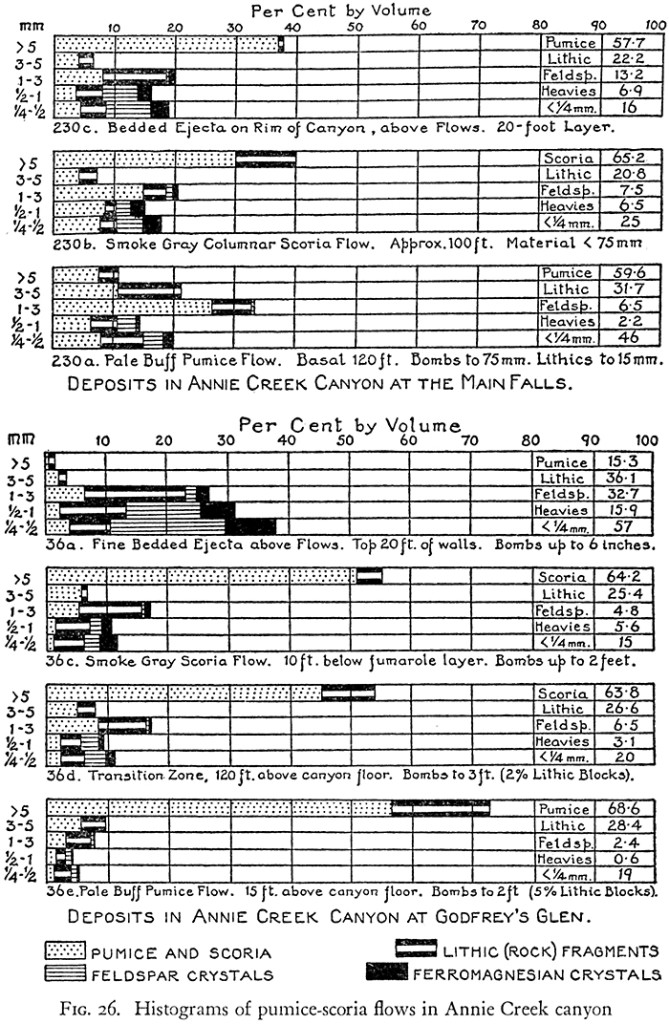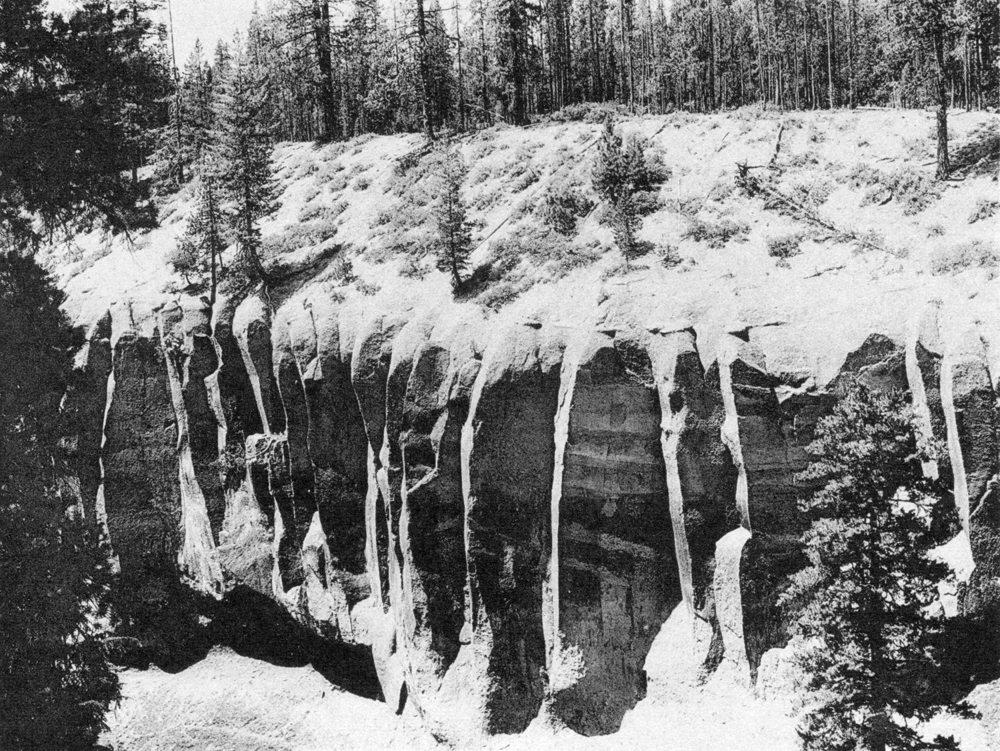At the margin of the pumice flow, west of the main falls of Annie Creek, and at a few other places, the original level of the flow may have been slightly higher than at present. In certain parts it may have been as much as 30 feet higher. Some of these high strand lines were produced by the surge of material up slopes opposed to the direction of movement, but they also occur where upsurging would not be expected. In such instances, the explanation must be that the whole surface of the pumice flow settled as a result of compaction. Similar strand lines were observed bordering the tuff flow in the Valley of Ten Thousand Smokes.
At the falls of Annie Creek, the succession of deposits is:
a. 20 feet of crystal-lithic ash with a few pumice and scoria bombs up to 18 inches. Downstream this topmost layer thickens to 50 feet.
b. 100 feet of smoke-gray, compacted scoria.
c. 100 feet of pale-buff dacite pumice.
In both the scoria and the pumice, bombs more than 2 feet across are common, but fragments of old lava exceeding a few inches in diameter are rare. The nature of the finer matrix is adequately shown by the histograms, figure 26.
Below the falls, the walls of Annie Creek are cut almost entirely through massive, columnar scoria, rich in crystalline bombs (plate 17, figure 1). No clear signs of fumarolic action have been observed in this stretch of the canyon, presumably because the flows had lost much of their gas by the time they had traveled this far.
|
Plate 17. Fig. 1. Columnar scoria flow overlain by crystal- and lithic-rich ash, Annie Creek canyon. (Photograph by William Schoeb.) |
Close to the south boundary of the park, the Annie Creek flows joined those of Sun Creek, and together they swept toward Fort Klamath. Just where they came to an end cannot be determined, but probably they continued to the shores of Upper Klamath Lake, which were then many miles nearer Fort Klamath than now. Perhaps the flourlike pumice in the alluvial flats about Fort Klamath was produced by settling of finer material from the flows as they entered water.
***previous*** — ***next***



